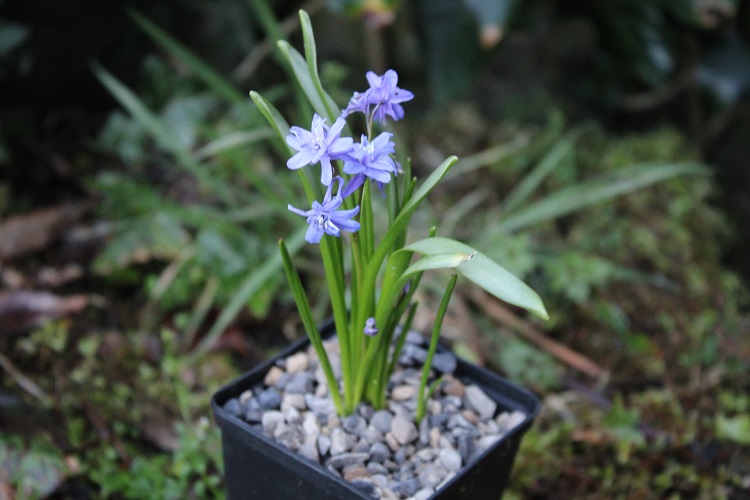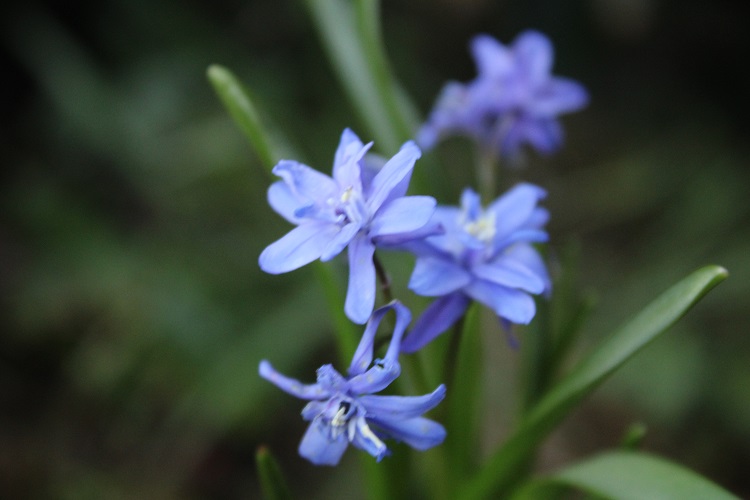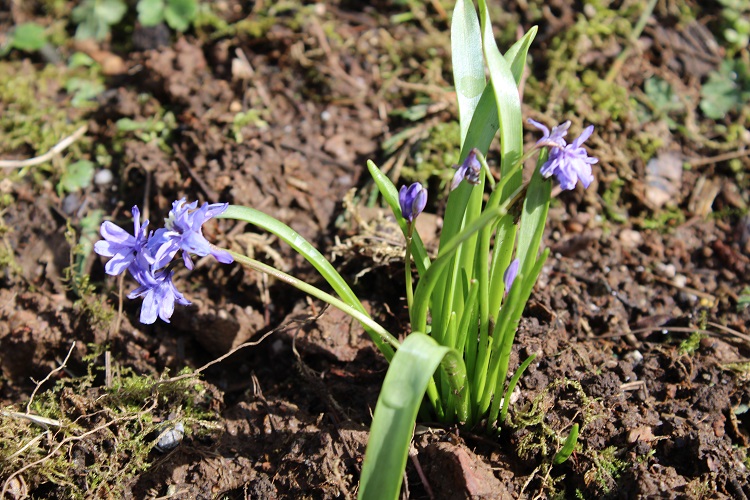 |
A double flowered form of Scilla bifolia. I bought it from Gwaun Valley Nursery at the AGS show at Rosemoor. Their label says: "Excellent choice form with almost double flowers of rich purple-blue. Grows and increases well in good, rich well-drained soils in sun/part shade." I was told that it was as strong as they typical form and so with unusual courage I planted it out in the new herbaceous border immediately where I think it has settled in, flowering again in 2025. In a note about the RHS Early Spring Show in 1999 it says: "Several new bulbs made their debut. Scilla bifolia 'Norman Stevens' was collected in Turkey and named after the owner of Cambridge Bulbs." Writing in the Bulletin of the AGS in 2018, Robert Rolfe says: "When it comes to true blue, the semi-double Scilla bifolia 'Norman Stevens' is capable of putting on quite a performance. Its discoverer, in tandem with Vic Horton, chanced upon this on an eventful Turkish marathon plant-hunting trip in 1979, south of Lake Van. In this the outer array of segments are complemented by a second, typically furrowed central set, with between two and four whitish, yellow tipped and functioning anthers at the core. No seed set here in over 15 years but the Kurdistan population was reportedly self-perpetuating. A word of caution: a pan taken into my alpine house this March was afflicted by a nasty novel ailment that I looked up and diagnosed as Scilla anther smut (Ustilago vaillantii). which despoils the flowers with choking, sooty spores that spill down onto the foliage, engendering further contamination. Destroying the affected bulbs then replanting into a fresh site is the recommended treatment. A duplicate panful left in an open frame was unafflicted, suggesting that the winter-then-spring-then-winter-again conditions under glass in the non-spring of 2018 perhaps fostered the contamination." |
|
| 23rd March 2024 | ||


